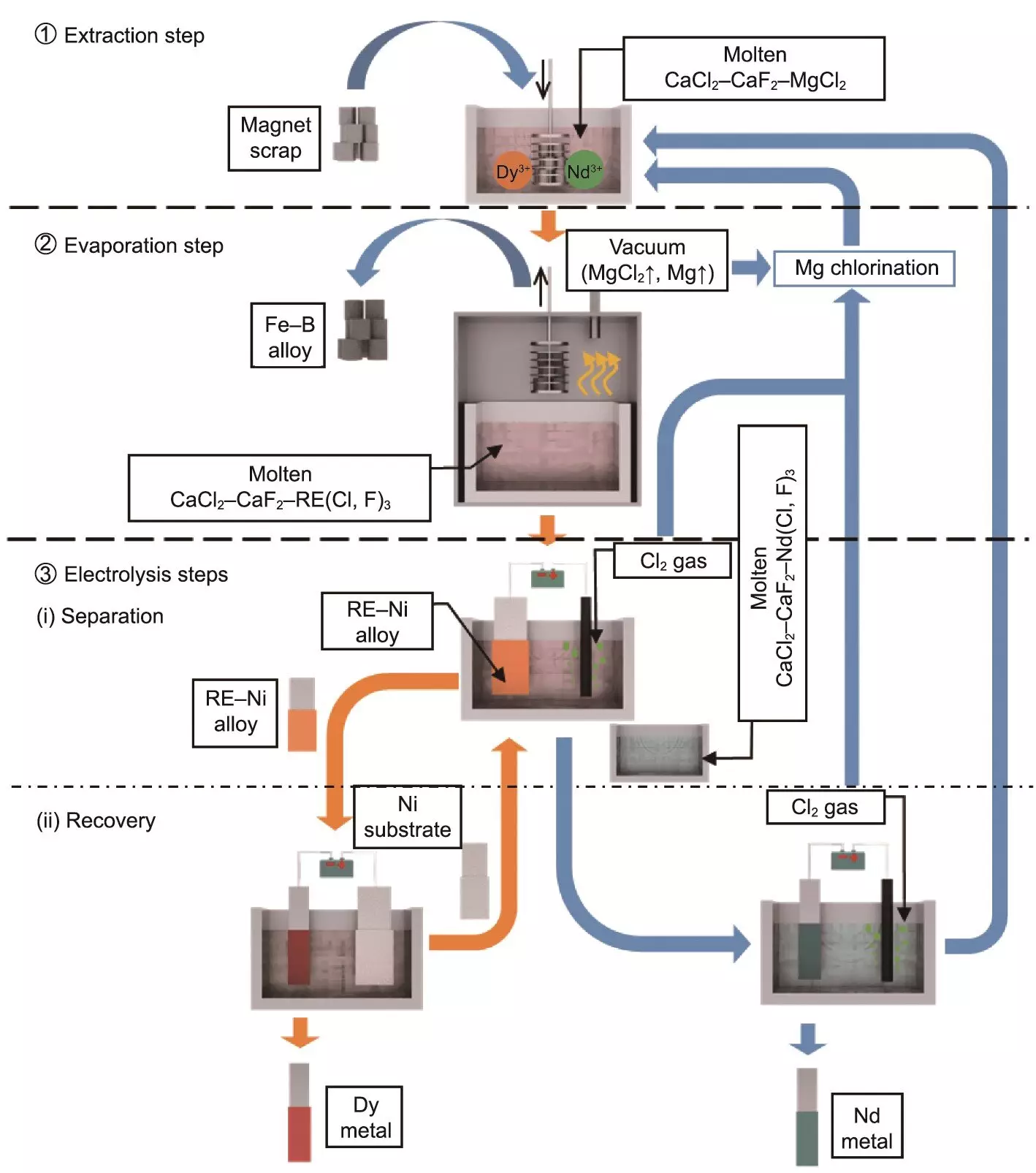As global demand for green technologies surges, the need for efficient recycling of rare-earth elements (REEs) has never been more pressing. These materials, specifically elements like neodymium (Nd) and dysprosium (Dy), are fundamental in the production of high-performance magnets that power electric vehicles and wind turbines. The increased reliance on these technologies underlines not just the importance of REEs but also the environmental consequences associated with their extraction and processing. Prior to the widespread popularity of electric mobility and renewable energies, mining these elements posed significant ecological challenges. However, recent developments in recycling techniques could pave the way for a more circular economy, mitigating these issues while enhancing the sustainability of crucial technologies.
A recent study from Kyoto University introduces an innovative method known as the selective extraction–evaporation–electrolysis (SEEE) process. Led by professor Toshiyuki Nohira, this research ventures beyond traditional recycling methods that are often energy-intensive and environmentally detrimental. The SEEE process stands out by offering a more streamlined and eco-friendly approach to separating rare-earth elements, particularly from end-of-life magnets.
The SEEE process is structured in three critical phases: selective extraction, selective evaporation, and selective electrolysis. During the extraction phase, a molten salt mixture, inclusive of components like calcium chloride (CaCl2) and magnesium chloride (MgCl2), is employed to draw out REEs from magnet fragments. The incorporation of calcium fluoride (CaF2) is vital as it minimizes evaporation losses while enhancing extraction efficiency. Following this, the selective evaporation phase focuses on the removal of any residual agents to concentrate the REEs effectively. Finally, the process culminates in selective electrolysis, wherein the extracted elements are separated based on their distinct electrochemical properties. This method has yielded recovery rates of 96% for Nd and 91% for Dy, with both reaching purities over 90%. This remarkable efficiency marks a significant leap forward from conventional recycling frameworks.
The implications of the SEEE process extend far beyond just the recycling of Nd magnets. With the EV market poised for exponential growth, this method holds the potential to stabilize REE supply chains while decreasing reliance on newly sourced materials. Mining activities, which have been historically associated with environmental degradation, could see a substantial decline if recycling processes such as SEEE become mainstream. The efficient recovery of these essential materials promotes an important shift towards sustainability, reinforcing the concept of a circular economy where waste is minimized, and resources are efficiently utilized.
Moreover, the versatility of the SEEE process is noteworthy. The initial findings suggest that this method could be adapted for other applications, including the reprocessing of nuclear fuels, thus broadening its impact across various sectors and further enhancing its relevance in today’s economy.
While the initial results of the SEEE process are undeniably promising, researchers are aware that further technical refinement is necessary for its full integration into industrial operations. Transitioning from laboratory results to practical application often requires overcoming obstacles related to scalability and economic viability. Future research will be essential to address these challenges, ensuring that the SEEE process can be standardized for commercial use.
In the grander scheme of environmental sustainability, innovations such as the SEEE process signify a crucial step in addressing the recycling and sustainability challenges associated with rare-earth elements. With countries increasingly committing to carbon neutrality, the development of cutting-edge recycling technologies will be indispensable. By fostering advancements that align with these goals, the scientific community and industry players alike are poised to significantly impact environmental sustainability.
As we navigate the challenges posed by climate change and resource scarcity, embracing effective recycling methods will play a critical role. The SEEE process offers an indication of what the future could hold, bridging the gap between technological innovation and ecological responsibility. For a world increasingly reliant on green technology, ensuring that the materials we depend on are sourced sustainably has never been more essential. The research conducted at Kyoto University could indeed serve as a catalyst for change, setting a precedent for how industries approach the recycling of valuable resources in a manner that prioritizes environmental stewardship.

